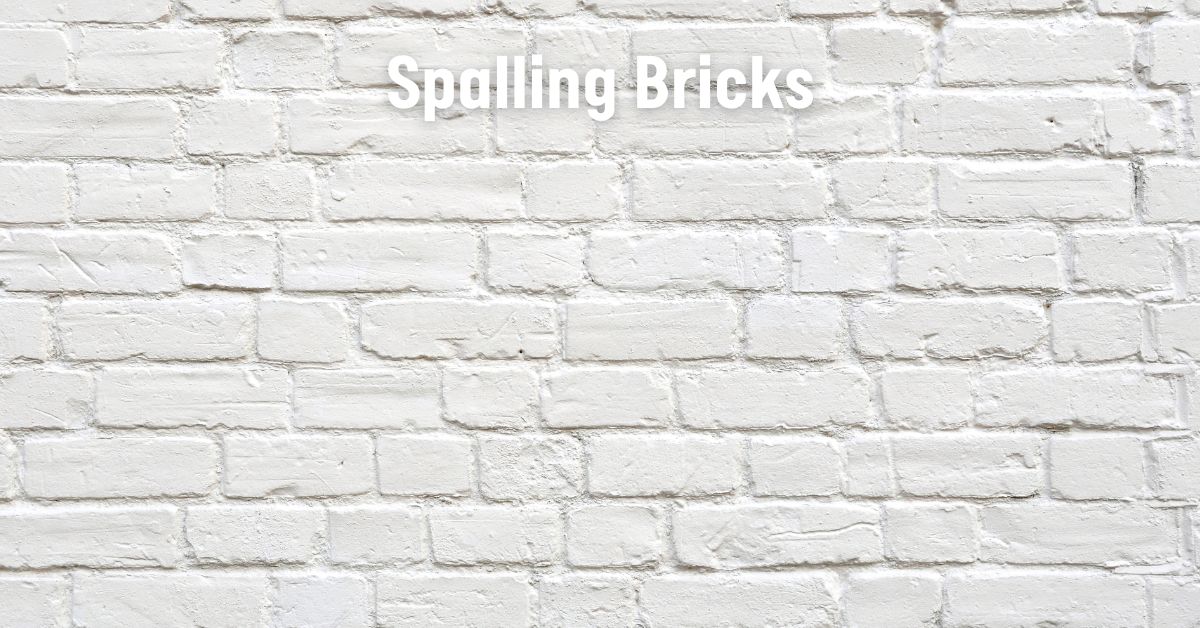Spalling bricks, a common issue in construction and masonry, can significantly compromise the integrity and aesthetics of a structure. Understanding what causes spalling, how to recognize its signs, and implementing preventive measures is essential for maintaining the longevity and safety of buildings.
Introduction
Spalling bricks refer to the process where the surface of a brick deteriorates, resulting in the flaking or chipping away of material. This deterioration is often caused by environmental factors and poor maintenance practices. Addressing spalling bricks promptly is crucial to prevent further damage and costly repairs.
Understanding Spalling Bricks
Definition and Characteristics
Spalling occurs when the surface of a brick starts to break apart, exposing the inner layers to the elements. This can lead to structural weakness and compromise the overall stability of a building. The affected bricks may appear discolored, rough, or have visible cracks.
Importance of Addressing Spalling Bricks
Ignoring spalling bricks can have serious consequences, including structural instability, water infiltration, and aesthetic degradation. Regular inspection and maintenance can help identify and address spalling issues before they escalate.
Common Causes of Spalling Bricks
Several factors contribute to the deterioration of bricks, including:
Freeze-Thaw Cycles
In regions with fluctuating temperatures, water can seep into brick pores. When the water freezes, it expands, causing pressure within the brick. Over time, this cycle leads to spalling as the brick’s surface breaks apart.
Moisture Penetration
Poor drainage or improper sealing can allow moisture to infiltrate brick surfaces. As moisture accumulates, it weakens the brick’s structure and accelerates the spalling process.
Chemical Exposure
Exposure to harsh chemicals, such as acids or salts, can accelerate the deterioration of bricks. Chemical reactions weaken the bonds within the brick, leading to spalling over time.
Signs of Spalling Bricks
Identifying spalling early is crucial for preventing further damage. Common signs include:
Visual Indicators
- Flaking or chipping on the surface of bricks
- Discoloration or staining
- Crumbling mortar joints
Structural Implications
- Cracks in the brickwork
- Sagging or bulging walls
- Water infiltration or dampness indoors
Preventive Measures
Taking proactive steps to prevent spalling can extend the lifespan of brick structures. Key measures include:
Proper Installation Techniques
Ensuring bricks are installed correctly, with adequate spacing and mortar, can reduce the risk of spalling. Following industry standards and best practices is essential for long-term durability.
Moisture Control Methods
Implementing effective moisture control measures, such as proper drainage and waterproofing, can minimize the likelihood of water infiltration. Regular maintenance, including cleaning gutters and downspouts, is also critical.
Protective Coatings
Applying sealants or coatings to brick surfaces can provide an additional layer of protection against moisture and chemical damage. However, it’s essential to choose products specifically designed for masonry applications and follow manufacturer recommendations.
Repairing Spalling Bricks
When spalling occurs, prompt action is necessary to prevent further deterioration. The repair process typically involves:
Assessment of Damage
Inspecting the extent of spalling and identifying underlying causes is the first step in the repair process. This may involve consulting with a professional mason or structural engineer to develop a comprehensive repair plan.
Repair Techniques
Depending on the severity of the damage, repair techniques may vary from patching small areas to replacing entire bricks. Common repair methods include tuckpointing, brick replacement, and application of specialized mortars or coatings.
Professional vs. DIY Approach
While minor spalling repairs can be tackled by DIY enthusiasts, extensive damage may require professional intervention. Hiring experienced masons ensures proper diagnosis and execution of repair solutions, minimizing the risk of further issues.
Conclusion
Spalling bricks pose a significant threat to the structural integrity and aesthetics of buildings. Understanding the causes, signs, and preventive measures is essential for mitigating the risk of spalling and preserving the longevity of brick structures.
FAQs (Frequently Asked Questions)
- How can I prevent spalling bricks? Implementing proper installation techniques, moisture control measures, and protective coatings can help prevent spalling.
- Can I repair spalling bricks myself? While minor repairs can be DIY projects, extensive damage may require professional intervention to ensure effective and long-lasting solutions.
- What are the signs of spalling bricks? Visual indicators include flaking, chipping, and discoloration on brick surfaces, along with structural issues like cracks and water infiltration.
- What causes spalling bricks? Common causes include freeze-thaw cycles, moisture penetration, and exposure to harsh chemicals, which weaken the structural integrity of bricks.
- Why is it important to address spalling promptly? Ignoring spalling can lead to further deterioration, structural instability, and costly repairs. Prompt action is crucial for preserving the integrity of brick structures.
